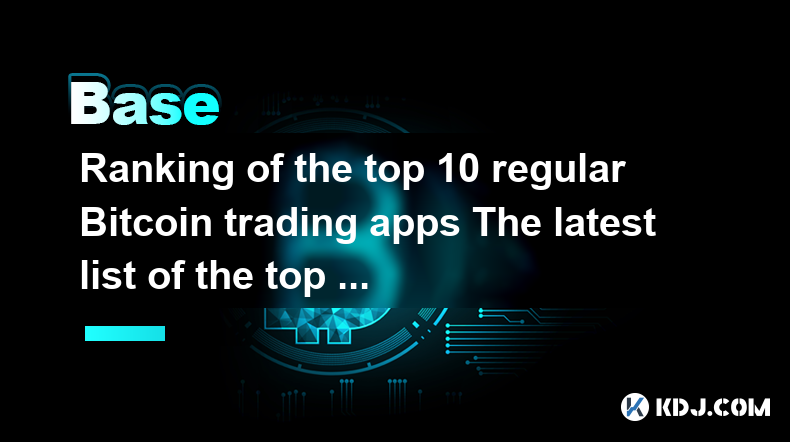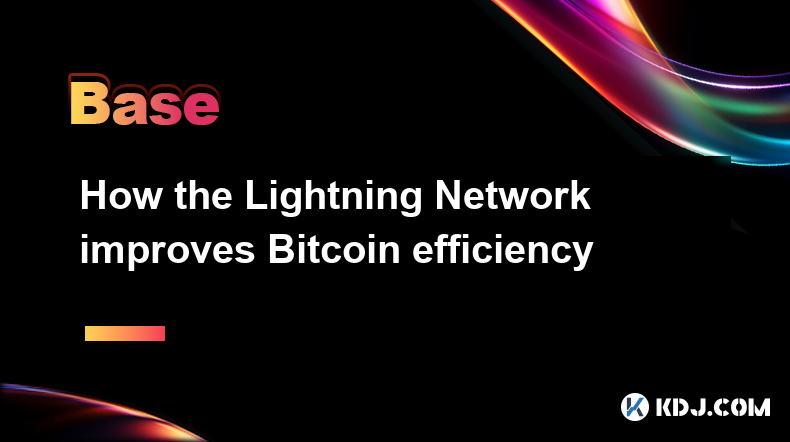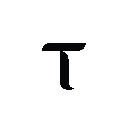-
 Bitcoin
Bitcoin $87,315.1852
3.56% -
 Ethereum
Ethereum $1,630.6745
3.43% -
 Tether USDt
Tether USDt $1.0000
-0.01% -
 XRP
XRP $2.1211
3.50% -
 BNB
BNB $601.3750
1.83% -
 Solana
Solana $139.4069
1.88% -
 USDC
USDC $1.0000
0.00% -
 Dogecoin
Dogecoin $0.1621
5.44% -
 TRON
TRON $0.2427
-1.07% -
 Cardano
Cardano $0.6408
4.12% -
 Chainlink
Chainlink $13.4721
4.10% -
 Avalanche
Avalanche $20.5905
6.44% -
 UNUS SED LEO
UNUS SED LEO $9.0293
-3.55% -
 Stellar
Stellar $0.2580
6.57% -
 Toncoin
Toncoin $3.0124
1.24% -
 Shiba Inu
Shiba Inu $0.0...01262
3.69% -
 Sui
Sui $2.2608
7.36% -
 Hedera
Hedera $0.1701
4.81% -
 Bitcoin Cash
Bitcoin Cash $340.3613
1.98% -
 Polkadot
Polkadot $3.9035
2.19% -
 Litecoin
Litecoin $80.3247
5.82% -
 Hyperliquid
Hyperliquid $17.9745
1.79% -
 Dai
Dai $1.0000
0.00% -
 Bitget Token
Bitget Token $4.4669
1.79% -
 Ethena USDe
Ethena USDe $0.9992
0.00% -
 Pi
Pi $0.6333
1.02% -
 Monero
Monero $215.0155
0.40% -
 Uniswap
Uniswap $5.4281
4.46% -
 Pepe
Pepe $0.0...07881
7.27% -
 Aptos
Aptos $5.1724
4.43%
What is a "Merkle Tree"? What is its role in blockchain?
Merkle trees in blockchain enable efficient data verification and integrity, crucial for scalability and security, by using a hierarchical structure of cryptographic hashes.
Mar 30, 2025 at 11:49 am

Understanding Merkle Trees in Blockchain Technology
A Merkle tree, also known as a hash tree, is a data structure used in many blockchain systems to efficiently verify the integrity of large datasets. It's essentially a hierarchical arrangement of cryptographic hashes. Each leaf node represents a transaction's hash, and each non-leaf node is the hash of its children. This structure allows for efficient verification of data without needing to examine every individual piece of data.
This hierarchical structure is crucial for blockchain's efficiency. Imagine a blockchain containing thousands of transactions. Verifying each transaction individually would be incredibly time-consuming. The Merkle tree allows for a much more streamlined process. Instead of checking every transaction, a node can verify a smaller subset of the data.
The root hash of the Merkle tree, often called the Merkle root, acts as a single fingerprint for the entire set of transactions. This root hash is included in the block header, providing a concise summary of all transactions within that block. This significantly reduces the amount of data that needs to be transmitted and verified.
How a Merkle Tree Works in Practice
Let's break down the process of creating and using a Merkle tree within a blockchain context:
Transaction Hashing: Each individual transaction is hashed using a cryptographic hash function (like SHA-256). This creates the leaf nodes of the Merkle tree.
Pairing and Hashing: Pairs of leaf nodes are combined, and their concatenation is hashed. This produces the next level of nodes.
Iterative Process: This pairing and hashing process continues recursively until only one hash remains – the Merkle root.
Block Inclusion: The Merkle root is then included in the block header along with other metadata, such as a timestamp and the previous block's hash.
Verification: To verify a specific transaction, only the path from that transaction's leaf node to the Merkle root needs to be traversed. This significantly reduces the computational overhead compared to verifying all transactions. This path, along with the Merkle root, allows for efficient verification.
The beauty of this system lies in its efficiency and security. A single change to any transaction will propagate up the tree, altering the Merkle root. This immediately signals data corruption or tampering, ensuring the integrity of the entire dataset.
The Importance of Merkle Trees in Blockchain Security
The cryptographic properties of hash functions are central to the security offered by Merkle trees. Even a minor alteration to a single transaction will result in a completely different Merkle root. This makes it incredibly difficult to tamper with data without detection.
The Merkle tree's ability to efficiently verify large datasets is essential for the scalability of blockchain technology. Without this efficient verification mechanism, processing and verifying the vast amount of transactions on a public blockchain would be computationally infeasible.
The use of Merkle trees significantly contributes to the immutability of blockchain data. The inherent properties of cryptographic hashing and the hierarchical structure ensure that any change to the data is easily detectable, preventing unauthorized modifications.
Merkle Trees and Lightweight Clients
Merkle trees are particularly important for lightweight clients. These clients don't need to download the entire blockchain to verify transactions. Instead, they can download only the relevant parts of the Merkle tree to verify specific transactions they are interested in. This makes blockchain technology more accessible to users with limited resources.
This selective verification is a key advantage of Merkle trees. It allows for efficient data verification without the need for downloading and storing the entire blockchain dataset, making blockchain technology more scalable and user-friendly. This is crucial for the wider adoption of blockchain technology.
Merkle Trees and Data Integrity
The core function of a Merkle tree is to guarantee data integrity. By using cryptographic hashes at every level, any alteration to the data is immediately reflected in the Merkle root. This provides a robust mechanism for detecting tampering and ensuring the trustworthiness of the data.
This feature is crucial for blockchain's security and reliability. The immutability of the blockchain is directly linked to the integrity provided by the Merkle tree. Any attempt to manipulate the data will be instantly detectable, reinforcing the trust and security of the system.
Frequently Asked Questions
Q: What is the main advantage of using a Merkle tree in a blockchain?
A: The primary advantage is efficient verification of large datasets. Instead of verifying every transaction individually, a user can verify a small portion of the data using the Merkle tree's hierarchical structure. This significantly improves scalability and reduces computational overhead.
Q: How does a Merkle tree ensure data integrity?
A: Any change to a single transaction will propagate up the tree, changing the Merkle root. This makes it immediately apparent if data has been tampered with. The cryptographic hash functions used ensure that even a tiny alteration will result in a completely different Merkle root.
Q: What is the Merkle root, and why is it important?
A: The Merkle root is the top-most hash in the Merkle tree. It acts as a single, concise fingerprint representing the entire dataset of transactions within a block. Its inclusion in the block header allows for efficient verification of the block's contents.
Q: Can Merkle trees be used outside of blockchain technology?
A: Yes, Merkle trees are a general-purpose data structure and can be used in various applications where data integrity and efficient verification are crucial. They find applications in version control systems, file synchronization, and other areas requiring secure and efficient data management.
Q: How do Merkle trees improve the scalability of blockchain?
A: By allowing for efficient verification of only a small subset of the data, Merkle trees significantly reduce the computational burden associated with verifying large blockchain datasets. This enables lightweight clients and contributes to the overall scalability of the blockchain network.
Disclaimer:info@kdj.com
The information provided is not trading advice. kdj.com does not assume any responsibility for any investments made based on the information provided in this article. Cryptocurrencies are highly volatile and it is highly recommended that you invest with caution after thorough research!
If you believe that the content used on this website infringes your copyright, please contact us immediately (info@kdj.com) and we will delete it promptly.
- Ethereum (ETH) Attempts a Comeback as Key Resistance Nears
- 2025-04-21 20:00:20
- Bitcoin Did Not Have the Explosive Start Many Expected
- 2025-04-21 20:00:20
- Bitcoin (BTC) Surges to New All-Time Highs as Gold Market Invests Flock to Safe-Haven Assets
- 2025-04-21 19:55:13
- AI Trading Agents Are Disrupting the Financial Services Industry
- 2025-04-21 19:55:13
- 4 Crypto Coins to Watch That Are Rewriting the Rules
- 2025-04-21 19:50:12
- President Donald Trump's threat to terminate Federal Reserve Chairman Jerome Powell
- 2025-04-21 19:50:12
Related knowledge

Recommended top ten spot digital virtual currency trading platforms in the world in 2025
Apr 21,2025 at 05:15pm
Recommended top ten spot digital virtual currency trading platforms in the world in 2025 1. Binance As the world's premier cryptocurrency trading platform, Binance is known for its extensive trading pairs and efficient trading services. Its features include: High Liquidity : Binance has huge trading volumes, ensuring users can trade at the best pric...

A list of the top ten digital currency trading apps in the world (2025 professional authoritative list)
Apr 21,2025 at 04:00pm
A list of the top ten digital currency trading applications in the world 1. Binance As the world's largest digital currency trading platform, Binance ranks first with its huge trading volume and rich trading pairs. Binance not only supports a variety of digital currency trading, but also provides a variety of services such as leveraged trading, futu...

The top 10 regular Bitcoin trading apps ranked the top ten authoritative list of Bitcoin exchanges
Apr 21,2025 at 05:49pm
Ranking of the top 10 regular Bitcoin trading apps 1. Binance As one of the world's leading cryptocurrency trading platforms, Binance is favored by investors for its efficient trading system and diverse trading pairs. Binance's advantage lies in its globalization strategy and multilingual support, which is suitable for users in different regions...

The function of cross-chain bridges in blockchain
Apr 19,2025 at 10:01am
The function of cross-chain bridges in blockchain is a pivotal topic within the cryptocurrency ecosystem, as these tools enable the seamless transfer of assets and data across different blockchain networks. This article delves into the various aspects of cross-chain bridges, explaining their importance, how they work, and the benefits and challenges the...

How the Lightning Network improves Bitcoin efficiency
Apr 17,2025 at 08:56pm
The Lightning Network represents a significant advancement in the Bitcoin ecosystem, aiming to address some of the most pressing issues related to transaction speed and cost. By enabling off-chain transactions, the Lightning Network drastically improves Bitcoin's efficiency, allowing for faster and cheaper transactions. This article will explore how the...

Market value ranking basis in cryptocurrencies
Apr 20,2025 at 05:08am
The market value ranking in cryptocurrencies is a crucial metric that investors and enthusiasts use to gauge the relative size and importance of different digital assets. This ranking is primarily based on the total market capitalization of each cryptocurrency, which is calculated by multiplying the current price of a single unit of the cryptocurrency b...

Recommended top ten spot digital virtual currency trading platforms in the world in 2025
Apr 21,2025 at 05:15pm
Recommended top ten spot digital virtual currency trading platforms in the world in 2025 1. Binance As the world's premier cryptocurrency trading platform, Binance is known for its extensive trading pairs and efficient trading services. Its features include: High Liquidity : Binance has huge trading volumes, ensuring users can trade at the best pric...

A list of the top ten digital currency trading apps in the world (2025 professional authoritative list)
Apr 21,2025 at 04:00pm
A list of the top ten digital currency trading applications in the world 1. Binance As the world's largest digital currency trading platform, Binance ranks first with its huge trading volume and rich trading pairs. Binance not only supports a variety of digital currency trading, but also provides a variety of services such as leveraged trading, futu...

The top 10 regular Bitcoin trading apps ranked the top ten authoritative list of Bitcoin exchanges
Apr 21,2025 at 05:49pm
Ranking of the top 10 regular Bitcoin trading apps 1. Binance As one of the world's leading cryptocurrency trading platforms, Binance is favored by investors for its efficient trading system and diverse trading pairs. Binance's advantage lies in its globalization strategy and multilingual support, which is suitable for users in different regions...

The function of cross-chain bridges in blockchain
Apr 19,2025 at 10:01am
The function of cross-chain bridges in blockchain is a pivotal topic within the cryptocurrency ecosystem, as these tools enable the seamless transfer of assets and data across different blockchain networks. This article delves into the various aspects of cross-chain bridges, explaining their importance, how they work, and the benefits and challenges the...

How the Lightning Network improves Bitcoin efficiency
Apr 17,2025 at 08:56pm
The Lightning Network represents a significant advancement in the Bitcoin ecosystem, aiming to address some of the most pressing issues related to transaction speed and cost. By enabling off-chain transactions, the Lightning Network drastically improves Bitcoin's efficiency, allowing for faster and cheaper transactions. This article will explore how the...

Market value ranking basis in cryptocurrencies
Apr 20,2025 at 05:08am
The market value ranking in cryptocurrencies is a crucial metric that investors and enthusiasts use to gauge the relative size and importance of different digital assets. This ranking is primarily based on the total market capitalization of each cryptocurrency, which is calculated by multiplying the current price of a single unit of the cryptocurrency b...
See all articles






















































































